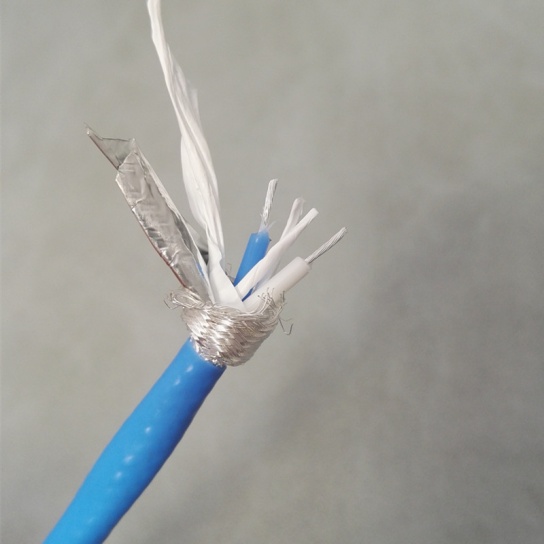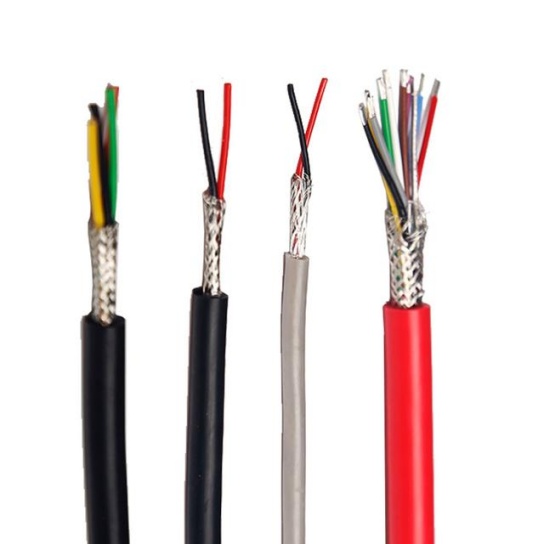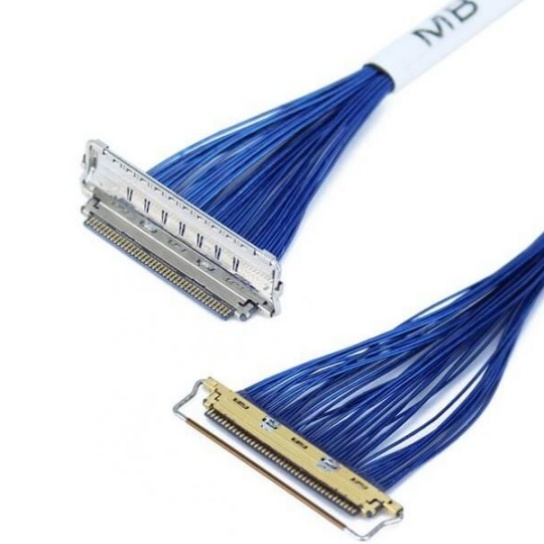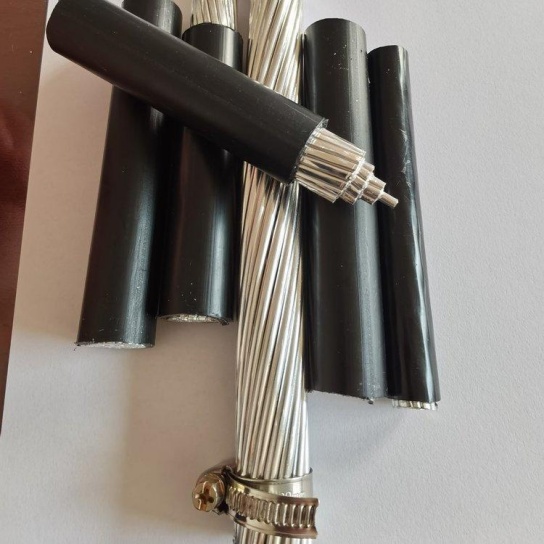Aircraft Cable Assemblies: Key to Uninterrupted Power Supply in Aircraft
In the complex ecosystem of modern aircraft, every component plays a vital role in ensuring safety, efficiency, and reliability—but few are as foundational to daily operations as aircraft cable assemblies. These specialized systems serve as the “nervous system” of an aircraft’s power infrastructure, transmitting electricity between critical components like generators, batteries, avionics, engines, and passenger systems. For airlines, military operators, and general aviation users alike, uninterrupted power isn’t just a convenience—it’s a non-negotiable requirement for avoiding in-flight failures, protecting crew and passengers, and maintaining compliance with global aviation regulations. In this article, we’ll explore why aircraft cable assemblies are irreplaceable for consistent power supply, their key performance characteristics, real-world applications, and how to choose a trusted provider—ending with why FRS stands out as a leading manufacturer of premium aircraft cable assemblies.
The Critical Role of Uninterrupted Power in Aircraft Operations
Before diving into the specifics of aircraft cable assemblies, it’s essential to understand why uninterrupted power is make-or-break for aviation. Modern aircraft rely on electricity for nearly every function: from powering flight control systems (like autopilot and navigation tools) and engine ignition to maintaining cabin pressure, lighting, and in-flight entertainment. Even a momentary power interruption can have catastrophic consequences: a glitch in avionics could disrupt communication with air traffic control, while a failure in engine power transmission might lead to in-flight shutdowns. For commercial airlines, power-related delays or cancellations also translate to significant financial losses—averaging tens of thousands of dollars per hour of downtime, plus damage to brand reputation.
Military aircraft face even higher stakes: combat missions demand 24/7 power reliability in extreme environments, from desert heat to high-altitude cold. A faulty cable assembly in a fighter jet or cargo plane could compromise mission success or put lives at risk. In general aviation, small aircraft depend on cable assemblies to power essential systems like radios and fuel pumps—making reliability critical for short-haul flights and emergency scenarios. In every case, the integrity of the power supply hinges on one component: aircraft cable assemblies.
How Aircraft Cable Assemblies Enable Uninterrupted Power
Aircraft cable assemblies are more than just “wires in a plane.” They are engineered systems designed to overcome the unique challenges of the aviation environment, ensuring consistent power transmission even in harsh conditions. Here’s how they deliver on this promise:
1. Connecting the Power Ecosystem
An aircraft’s power system is a network of interconnected components: engines drive generators to produce electricity, batteries store backup power for emergencies, and avionics/ cabin systems consume power on demand. Aircraft cable assemblies act as the bridges between these components, creating a seamless path for electricity to flow. Unlike generic cables, they are customized to fit the exact layout of an aircraft—whether routing power from the left engine to the cockpit avionics or from the main battery to the emergency lighting system. This precision eliminates “dead zones” in power transmission and reduces the risk of loose connections, which are a leading cause of power interruptions.
2. Minimizing Power Loss and Waste
In aviation, every watt of power matters—especially for electric or hybrid-electric aircraft (a fast-growing segment of the industry). Poorly designed cables can lose up to 10% of power through resistance, which not only reduces system efficiency but also generates heat (a fire hazard in the confined spaces of an aircraft). Aircraft cable assemblies solve this by using high-conductivity materials like tinned copper or silver-plated copper, which minimize resistance and heat buildup. They also feature optimized wire gauges: thicker wires for high-power components (like engines) and thinner, flexible wires for low-power systems (like cabin sensors)—ensuring each part of the power network operates at peak efficiency.
3. Preventing Faults and Failures
Power interruptions often stem from cable damage or degradation. Aircraft cable assemblies are built to resist the most common causes of failure, including vibration, extreme temperatures, and chemical exposure. For example, they use braided shielding to protect against electromagnetic interference (EMI)—a major threat to avionics, as EMI can disrupt power signals and cause system malfunctions. Additionally, their insulation and jacketing materials are tested to withstand temperatures ranging from -65°C (-85°F) (high-altitude cold) to 200°C (400°F) (engine bay heat), ensuring they don’t crack, melt, or degrade over time.
Key Characteristics of High-Quality Aircraft Cable Assemblies
Not all aircraft cable assemblies are created equal. To ensure uninterrupted power supply, top-tier products must meet strict performance and compliance standards. Below are the non-negotiable characteristics to look for:
1. Resistance to Extreme Environments
Aircraft operate in some of the harshest conditions on Earth: rapid temperature changes, high humidity, saltwater corrosion (for maritime flights), and constant vibration. High-quality cable assemblies use materials like PTFE (polytetrafluoroethylene) or silicone rubber for insulation—materials that are resistant to moisture, chemicals, and temperature fluctuations. They also feature rugged jacketing (often made of ETFE or polyimide) to protect against physical damage from debris or component movement. For example, military-grade cable assemblies may undergo additional testing for resistance to fuel, oil, and hydraulic fluids—common contaminants in aircraft engine bays.
2. Compliance with Global Aviation Standards
Aviation is one of the most regulated industries in the world, and cable assemblies must meet strict standards to be certified for use. The most widely recognized standards include:
- FAA (Federal Aviation Administration): Requires compliance with FAR Part 25 (for transport-category aircraft) and FAR Part 23 (for general aviation), which set limits on flammability, smoke, and toxicity (critical for cabin safety in case of fire).
- EASA (European Union Aviation Safety Agency): Follows CS-25 and CS-23 standards, aligned with FAA requirements for global compatibility.
- MIL-STD (Military Standards): Used for military aircraft, with standards like MIL-STD-883H (for microelectronics) and MIL-STD-1553 (for data bus cables) ensuring ruggedness and reliability.
- EN 3475: A European standard for aircraft cables, specifying performance in extreme temperatures and mechanical stress.
Any reputable aircraft cable assembly must carry certifications for these standards—without them, there’s no guarantee of safety or reliability.
3. Mechanical Strength and Flexibility
Aircraft cable assemblies must balance two seemingly opposing traits: mechanical strength (to withstand vibration and physical stress) and flexibility (to fit into tight spaces, like the gaps between avionics panels). High-quality products achieve this by using stranded conductors (instead of solid wires), which are more flexible and resistant to fatigue from vibration. They also include strain relief features—like reinforced connectors or braided sleeves—to prevent wires from breaking at connection points, a common failure spot in low-quality assemblies.
4. EMI/RFI Shielding
Electromagnetic interference (EMI) and radiofrequency interference (RFI) are major threats to aircraft power systems. EMI from nearby components (like radar or communication systems) can disrupt power signals, leading to glitches in avionics or even power cuts. Top-tier aircraft cable assemblies include multi-layer shielding—such as copper braiding, aluminum foil, or conductive polymers—to block EMI/RFI. This shielding is especially critical for fly-by-wire aircraft, where electronic signals (not mechanical controls) govern flight operations.
Applications of Aircraft Cable Assemblies Across Aircraft Types
Aircraft cable assemblies are universal in aviation, but their design and specifications vary based on the type of aircraft and its mission. Below are key applications for different segments:
1. Commercial Airliners (Passenger Jets)
In commercial aircraft (like Boeing 787s or Airbus A350s), cable assemblies power a wide range of systems:
- Avionics: Transmit power to flight decks, including navigation systems (GPS, radar), communication tools (radios, transponders), and flight control computers.
- Cabin Systems: Supply electricity to lighting, air conditioning, in-flight entertainment (IFE) screens, and power outlets for passenger devices.
- Engine and Fuel Systems: Route power to engine ignition systems, fuel pumps, and fuel level sensors—ensuring engines run smoothly and fuel is distributed safely.
- Emergency Systems: Connect to backup batteries to power emergency lighting, oxygen masks, and evacuation slides in case of a power failure.
For commercial airlines, reliability is paramount—cable assemblies must operate for thousands of flight hours without maintenance, reducing downtime and costs.
2. Cargo Aircraft
Cargo planes (like the Boeing 747-8F or Airbus A330-200F) have unique power needs, as they carry heavy loads and specialized equipment (like refrigeration units for perishable goods). Aircraft cable assemblies here are designed to:
- Power cargo door motors (for loading/unloading heavy freight).
- Supply electricity to temperature control systems (maintaining cold chains for food or pharmaceuticals).
- Support tracking devices (GPS and cargo monitoring tools) that ensure freight safety.
These assemblies often have thicker conductors and more rugged shielding to handle the heavier power demands of cargo equipment.
3. Military Aircraft
Military planes (fighters, bombers, transport aircraft) require cable assemblies that can withstand combat conditions, including enemy fire, extreme G-forces, and chemical warfare agents. Key applications include:
- Weapon Systems: Powering missile launchers, machine guns, and targeting systems.
- Stealth Technology: Shielded cables that don’t emit EMI (critical for avoiding enemy radar detection).
- Survivability Systems: Connecting to backup power sources (like auxiliary power units) that keep systems running even if the main engine is damaged.
Military-grade cable assemblies meet MIL-STD standards and undergo rigorous testing—including shock, vibration, and ballistic impact tests—to ensure they perform in combat.
4. General Aviation (Small Planes, Helicopters)
General aviation (GA) aircraft—such as Cessna 172s or Bell helicopters—have smaller power systems but still rely on cable assemblies for safety. Applications include:
- Powering cockpit radios and navigation tools (essential for short-haul flights).
- Supplying electricity to rotor systems in helicopters (which require constant power to maintain lift).
- Supporting emergency beacons (activated in case of a crash or forced landing).
GA cable assemblies are often more compact and lightweight, designed to fit in the limited space of small aircraft cabins.
Factors to Consider When Selecting Aircraft Cable Assemblies
Choosing the right aircraft cable assembly is a critical decision—one that impacts safety, operational efficiency, and long-term costs. Below are the key factors to evaluate when partnering with a manufacturer:
1. Compliance with Industry Standards
As mentioned earlier, compliance with FAA, EASA, MIL-STD, and EN 3475 is non-negotiable. Ask potential providers for certification documents and test reports—avoid any manufacturer that cannot prove their products meet these standards.
2. Customization Capabilities
Every aircraft has unique power system layouts, and off-the-shelf cable assemblies may not fit or perform optimally. Look for a manufacturer that offers custom design services: they should work with your engineering team to create assemblies tailored to your aircraft’s dimensions, power requirements, and environmental conditions. For example, if you’re retrofitting an older aircraft with new avionics, a custom cable assembly can ensure compatibility without modifying the aircraft’s structure.
3. Quality Control and Testing
A reliable manufacturer will have strict quality control (QC) processes in place—from sourcing raw materials to final assembly. Ask about their testing procedures: do they perform continuity tests (to ensure power flows correctly), insulation resistance tests (to prevent leaks), and environmental tests (to simulate high temperatures or vibration)? The best manufacturers will also offer traceability—providing documentation that tracks each assembly from production to delivery, making it easier to troubleshoot issues later.
4. Technical Support and After-Sales Service
Even the highest-quality cable assemblies may require maintenance or replacement over time. Choose a manufacturer that offers comprehensive technical support: this includes helping with installation, providing maintenance guidelines, and offering quick replacements if a part fails. For airlines or military operators with tight schedules, fast turnaround times for repairs or replacements can mean the difference between a delayed flight and an on-time departure.
5. Long-Term Reliability (Not Just Cost)
It’s tempting to choose the cheapest cable assembly, but this can lead to higher costs in the long run. A low-quality assembly may fail prematurely, causing power interruptions, expensive downtime, or even safety incidents. Instead, prioritize reliability: a premium cable assembly may cost more upfront, but it will last longer, require less maintenance, and reduce the risk of costly failures.
FRS: Your Trusted Partner for Premium Aircraft Cable Assemblies
When it comes to ensuring uninterrupted power supply in aircraft, FRS stands out as a leading manufacturer of high-performance aircraft cable assemblies. For over a decade, we’ve been serving commercial airlines, military operators, and general aviation clients worldwide—delivering products that meet the strictest standards and exceed customer expectations. Here’s why FRS is the right choice for your aircraft’s power needs:
1. Uncompromising Compliance and Quality
Every FRS aircraft cable assembly is engineered to meet or exceed global aviation standards, including FAA FAR Part 25/23, EASA CS-25/23, MIL-STD-883H, and EN 3475. Our QC process is rigorous: we source only premium materials (like tinned copper conductors and PTFE insulation) and perform 100% testing on every assembly—including continuity, insulation resistance, EMI shielding, and environmental stress tests. We also provide full traceability documentation, so you can trust that every part meets your safety requirements.
2. Custom Solutions for Every Aircraft
At FRS, we understand that no two aircraft are the same. Our team of aerospace engineers works closely with your team to design custom cable assemblies tailored to your specific needs—whether you’re building a new commercial jet, retrofitting a military transport, or upgrading a general aviation helicopter. We handle every step of the design process: from analyzing your power system layout to creating 3D models and prototyping, ensuring the final product fits perfectly and performs reliably.
3. Rugged Design for Extreme Environments
FRS cable assemblies are built to withstand the harshest aviation conditions. Our products resist extreme temperatures (-65°C to 200°C), vibration (per MIL-STD-883H), moisture, saltwater corrosion, and chemical exposure (fuel, oil, hydraulic fluids). We use multi-layer EMI/RFI shielding to protect against signal disruption, and stranded conductors with strain relief features to prevent fatigue and breakage. For military clients, we offer additional ruggedization options—like ballistic-resistant jacketing—for combat-ready performance.
4. Exceptional Technical Support and Delivery
We know that aviation operations can’t wait. FRS offers 24/7 technical support: our team of experts is available to help with installation, troubleshooting, or maintenance questions. We also prioritize fast delivery—our state-of-the-art manufacturing facilities can produce custom assemblies in as little as 2-4 weeks, and we maintain a stock of standard assemblies for immediate shipment. For emergency situations (like a grounded aircraft needing a replacement cable), we offer expedited shipping to get you back in the air quickly.
5. A Track Record of Trust
FRS has earned the trust of leading aerospace companies worldwide. Our clients include major commercial airlines, military branches, and general aviation manufacturers—all of whom rely on our cable assemblies for uninterrupted power supply. We’re committed to long-term partnerships: we don’t just sell products—we work with you to optimize your power system, reduce maintenance costs, and ensure the safety of your crew and passengers.
In aviation, uninterrupted power supply is non-negotiable—and aircraft cable assemblies are the key to achieving it. Whether you’re operating a commercial airliner, a military jet, or a small general aviation plane, choosing the right cable assembly manufacturer can make all the difference. With FRS, you get more than a product: you get a partner dedicated to quality, reliability, and your success. Contact FRS today to learn how our aircraft cable assemblies can keep your aircraft powered safely and efficiently—every flight, every time.






